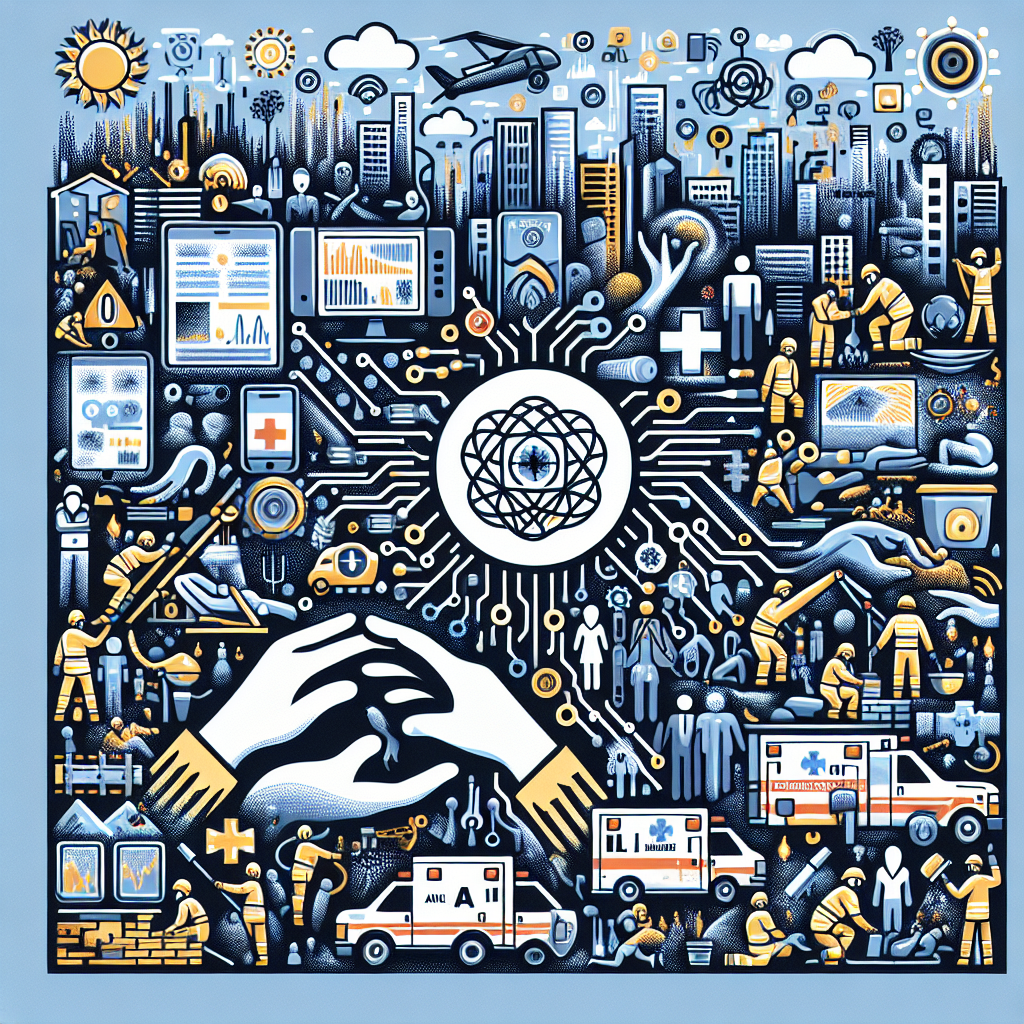In today’s world, disasters are becoming more frequent and severe due to various factors such as climate change, urbanization, and population growth. As a result, there is a growing need for innovative solutions to help communities respond to and recover from these disasters more effectively. One such solution is leveraging artificial intelligence (AI) tools for disaster response and recovery.
AI has the potential to revolutionize the way we approach disaster management by providing real-time data analysis, predictive modeling, and decision-making support. By harnessing the power of AI, emergency responders can better understand the scope and severity of a disaster, identify areas of high risk, allocate resources more efficiently, and coordinate response efforts more effectively. In this article, we will explore the various ways in which AI tools can be leveraged for disaster response and recovery, as well as address some common questions about this emerging technology.
AI for Disaster Response
One of the key benefits of AI in disaster response is its ability to analyze vast amounts of data in real-time. For example, AI-powered algorithms can process satellite imagery, social media feeds, weather data, and other sources of information to provide a comprehensive view of the disaster-affected area. This data can help emergency responders identify areas that are most in need of assistance, predict how the disaster is likely to evolve, and make informed decisions about resource allocation.
AI can also be used to automate certain aspects of disaster response, such as dispatching emergency services, managing logistics, and coordinating rescue operations. By using AI-powered chatbots and virtual assistants, emergency responders can streamline communication with affected populations, provide real-time updates on the situation, and answer frequently asked questions. This can help alleviate the burden on human responders and ensure that critical information reaches those in need more quickly.
In addition, AI can be used to enhance the efficiency of search and rescue operations. For example, drones equipped with AI algorithms can be deployed to survey disaster-affected areas, identify survivors, and assess the extent of damage. AI-powered robots can also be used to navigate hazardous environments, retrieve objects, and perform other tasks that would be too dangerous for human responders. By leveraging AI technologies in this way, emergency responders can save time, reduce risks, and improve the overall effectiveness of their operations.
AI for Disaster Recovery
In the aftermath of a disaster, AI can play a critical role in supporting recovery efforts. For example, AI-powered predictive analytics can help assess the long-term impact of a disaster on infrastructure, economy, and public health. By analyzing historical data and using machine learning algorithms, AI can forecast the likely outcomes of different recovery strategies, identify the most vulnerable populations, and prioritize interventions accordingly.
AI can also be used to streamline the process of rebuilding and restoring critical infrastructure. For example, AI-powered drones can be used to conduct rapid damage assessments, monitor construction progress, and ensure that reconstruction efforts are on track. AI algorithms can also be used to optimize resource allocation, identify cost-effective solutions, and streamline decision-making processes. By leveraging AI in these ways, communities can recover more quickly from disasters and build back stronger and more resilient than before.
FAQs about AI for Disaster Response and Recovery
Q: What is the role of AI in disaster response and recovery?
A: AI can help emergency responders analyze data, automate tasks, streamline communication, enhance search and rescue operations, support recovery efforts, and improve decision-making processes.
Q: How can AI help emergency responders during a disaster?
A: AI can provide real-time data analysis, predictive modeling, decision-making support, automated dispatching of emergency services, streamlined communication with affected populations, and enhanced search and rescue operations.
Q: How can AI support recovery efforts after a disaster?
A: AI can help assess the long-term impact of a disaster, forecast outcomes of recovery strategies, prioritize interventions, streamline rebuilding efforts, optimize resource allocation, and improve decision-making processes.
Q: What are some examples of AI tools used in disaster response and recovery?
A: Examples include AI-powered algorithms for data analysis, predictive modeling, decision-making support, chatbots and virtual assistants for communication, drones for search and rescue operations, robots for hazardous environments, and predictive analytics for recovery planning.
Q: What are the benefits of leveraging AI for disaster response and recovery?
A: Benefits include faster and more effective response efforts, improved decision-making processes, optimized resource allocation, reduced risks for responders, streamlined communication with affected populations, enhanced search and rescue operations, and more efficient recovery efforts.
In conclusion, leveraging AI tools for disaster response and recovery has the potential to revolutionize the way we approach emergency management. By harnessing the power of AI, emergency responders can analyze data more effectively, automate tasks more efficiently, streamline communication more seamlessly, and coordinate response efforts more effectively. As AI technologies continue to evolve, we can expect to see even greater advancements in disaster management, leading to more resilient communities and better outcomes for those affected by disasters.

